Encaustic Texture Tools
I hunt for tools at antique stores that I can use to pattern the wax surface. I come up with great finds and wanted to share here what’s possible, so you, too, can keep your eyes peeled and your mind open to just how many objects can create texture in your artwork.
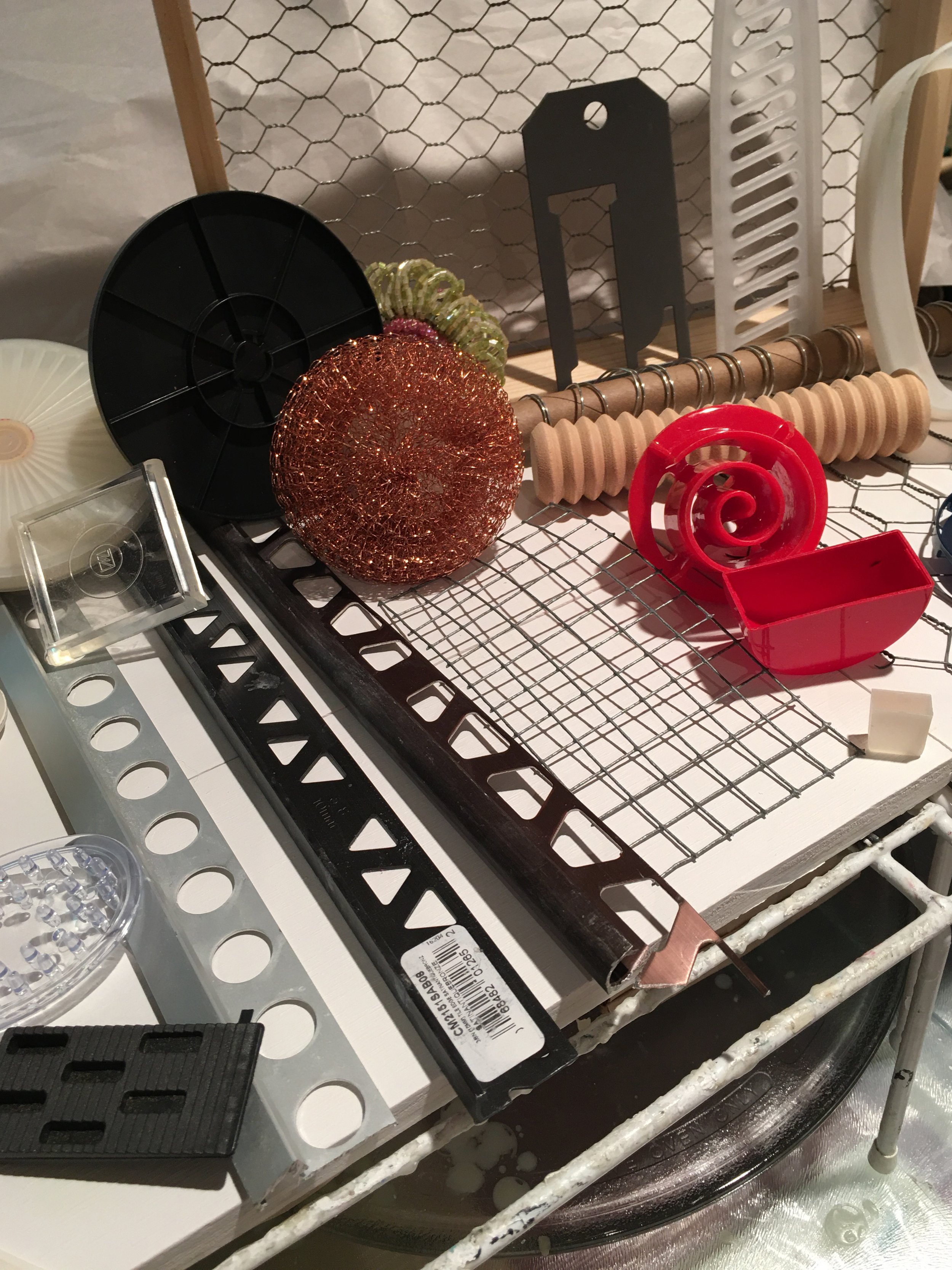
I collect metal floral frog trees in different shapes and sizes that make similar marks. The three long metal strips I found at Lowes and they are used in flooring or wall boarding I believe. They work like a stencil. A rectangular wire grid and the chicken wire in the background were also found at Lowes. The clear plastic square is plastic for putting under table legs. The round object on the far left is a lid off a Tupperware picture. A copper pot scrubber from Dollar Tree beside it works well for scratching up the surface for random mark making and texture. The red plastic rectangle is a lid from a perfume bottle and the red spiral I found at an antique store; no idea what its use was. A wooden dowel is behind it and rolled over the surface of the wax makes a continuous mark. I made a tool with hard cardboard and the metal spiral that is in notebooks by sliding it over the cardboard.

The four navy circles was packing material as was the plastic iron board shape with slots standing up in the back of the photo. The flower is a napkin ring holder.

The circles are lids off of Tupperware. The black spool from thread is one of my favorite mark making tools as is the bundle of dried natural materials that is used to stir tea. Keep in mind that it is more difficult to remove the wax from plastic than metal. I put plastic pieces in the freezer for an hour and it usually pops right off.
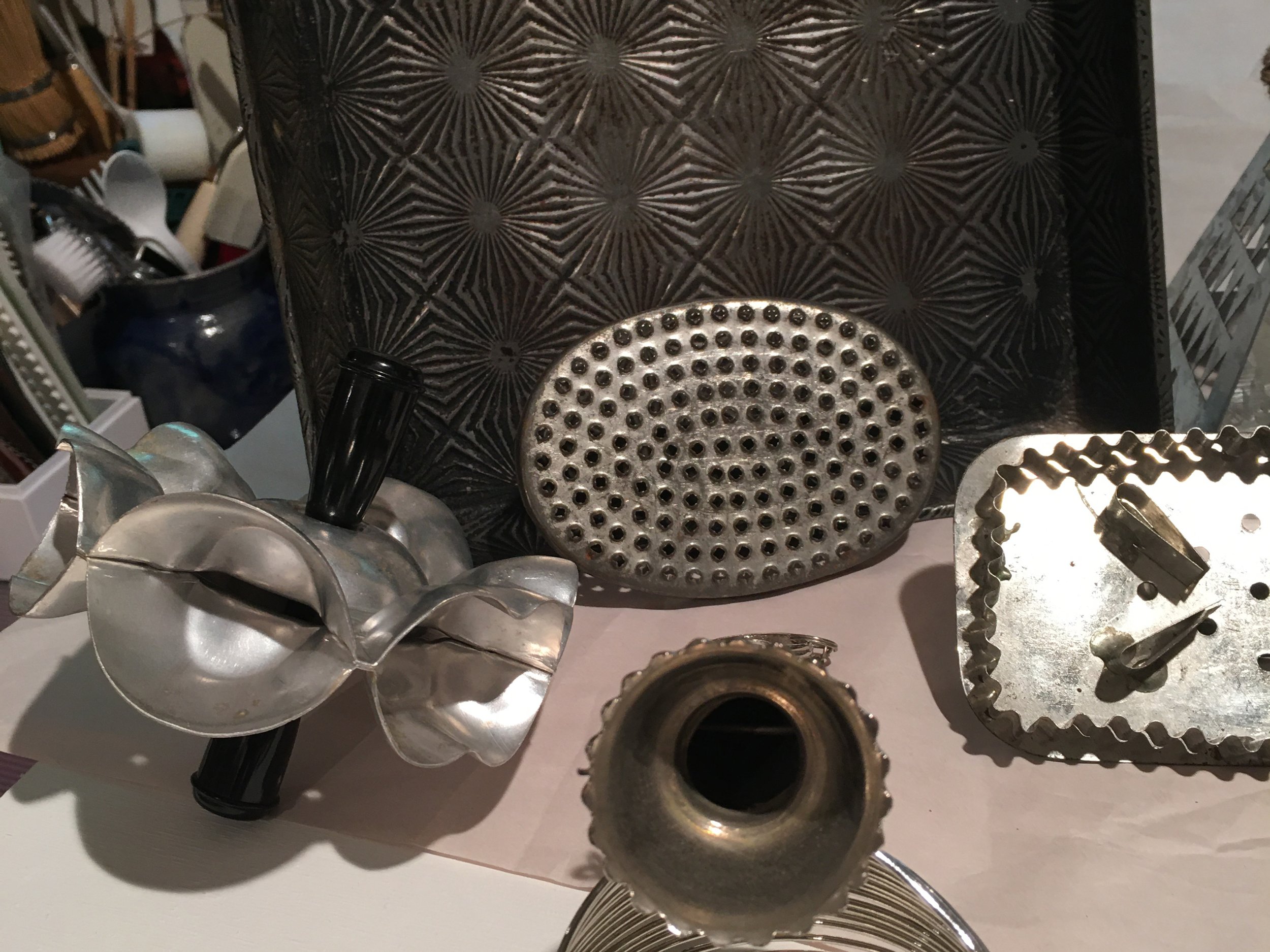
I found the cake pan in the back at an antique store. What a treasure! The raised design is on the inside and the back. I have used it to impress into the warm wax and also to do pencil rubbings for collage work. The oval metal in front of it has spikes and the rectangle is a cookie cutter.

I found these two gears on a vacation in an antique store. When rolled over the surface they many of them. The heart is a baking mold, the carved metal rectangle in front used to be on someone’s front door and I do rubbings from it and also impress into wax for the intricate pattern. The circle piece far right is more modern and used for coring apples. Far left is a mini triangular grater. Far right top is a curved metal with bars I use to roll over the wax.

These are all antique kitchen tools. It is amazing how many patterns spatulas come in. I have a dozen different ones. Simply press into warm wax to get the pattern on the surface. The spurred tool I think is for pastry or pasta making. The red-handled tool far right is an old knife sharpener.

A pizza cutter with curvy serrated edges, from antique store. The green tool is a sewing tool and makes ditty-dot-dot lines and my number one favorite tool. You can do an entire drawing on the surface of the wax with this tool.

The three yellow handled tools are for whipping eggs but make flower marks when pressed into the wax. The top two flower shapes are used making specialty cookies.

Two spatula whipping tools.
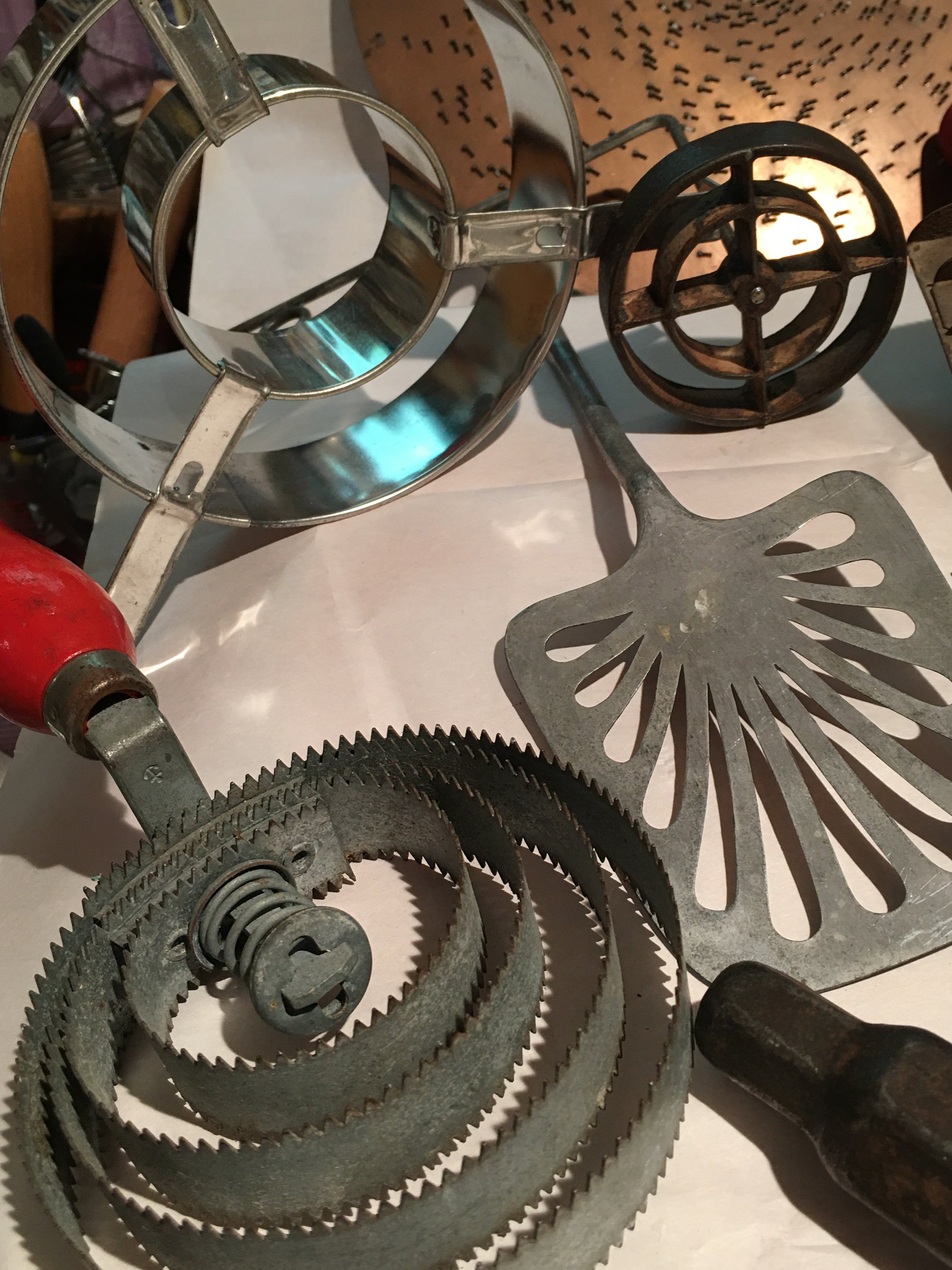
Top left is an insert for a cake pan. Far right is another specialty cookie press. Bottom left is a horse curry comb. And wow check out that spatula!

I have no idea what the tool on the right was for but it has long lines with serrated edges; great mark making. The disk tool might be for slicing boiled eggs. Another heavy metal tool with a hexagon shape’ perfect metaphor mark for working with bees wax. I envision a large area of a future art piece done with this tool.

This fan-shaped tool is used for draining water from a pot.
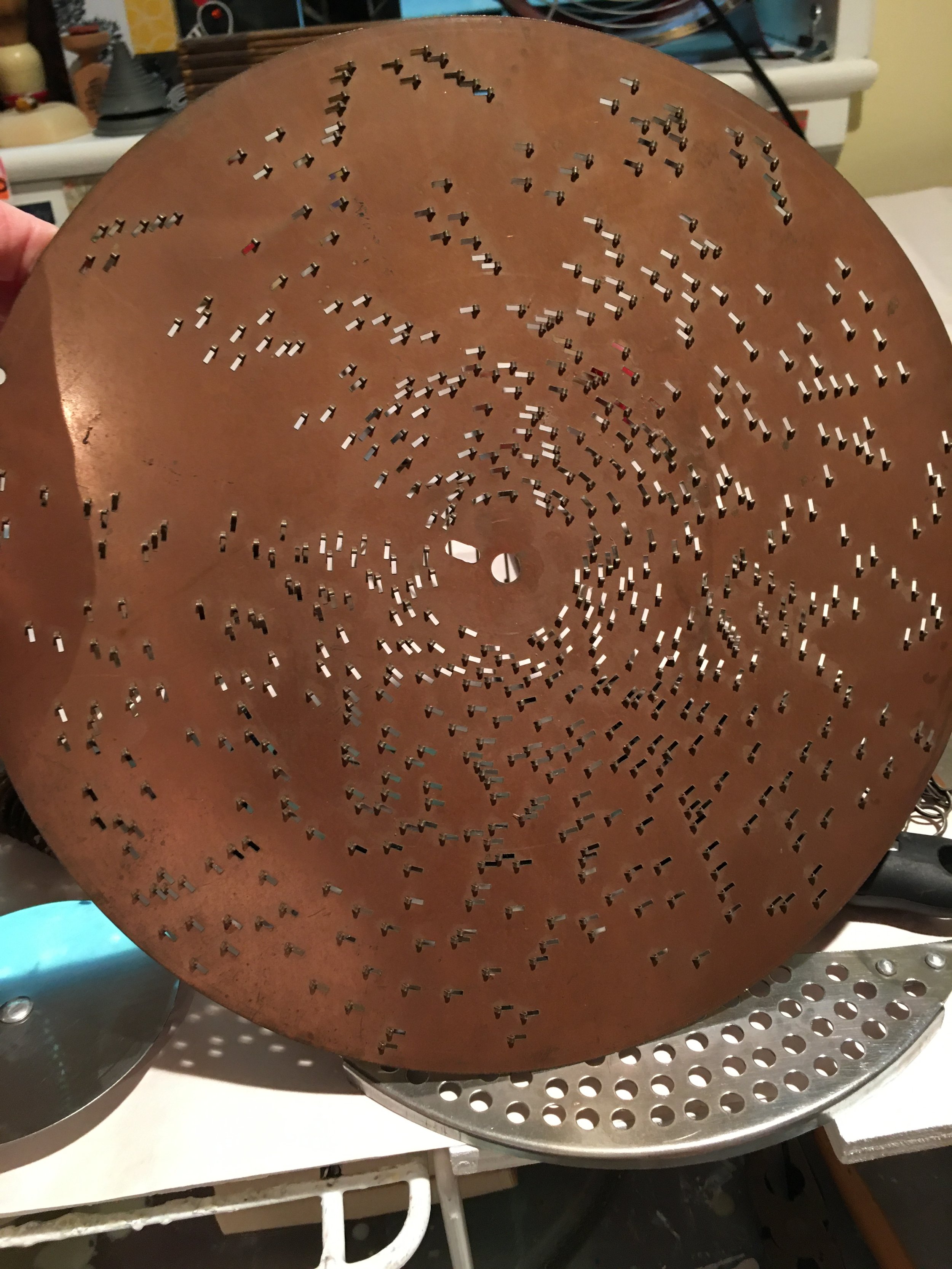
Very unusual find! This is apiece that was inside a player piano. The back side has sharp metal edges that can put the pattern on the wax surface. I also bought the player piano music sheets that are paper with cutouts in them for notes and I use the paper in my collages too.
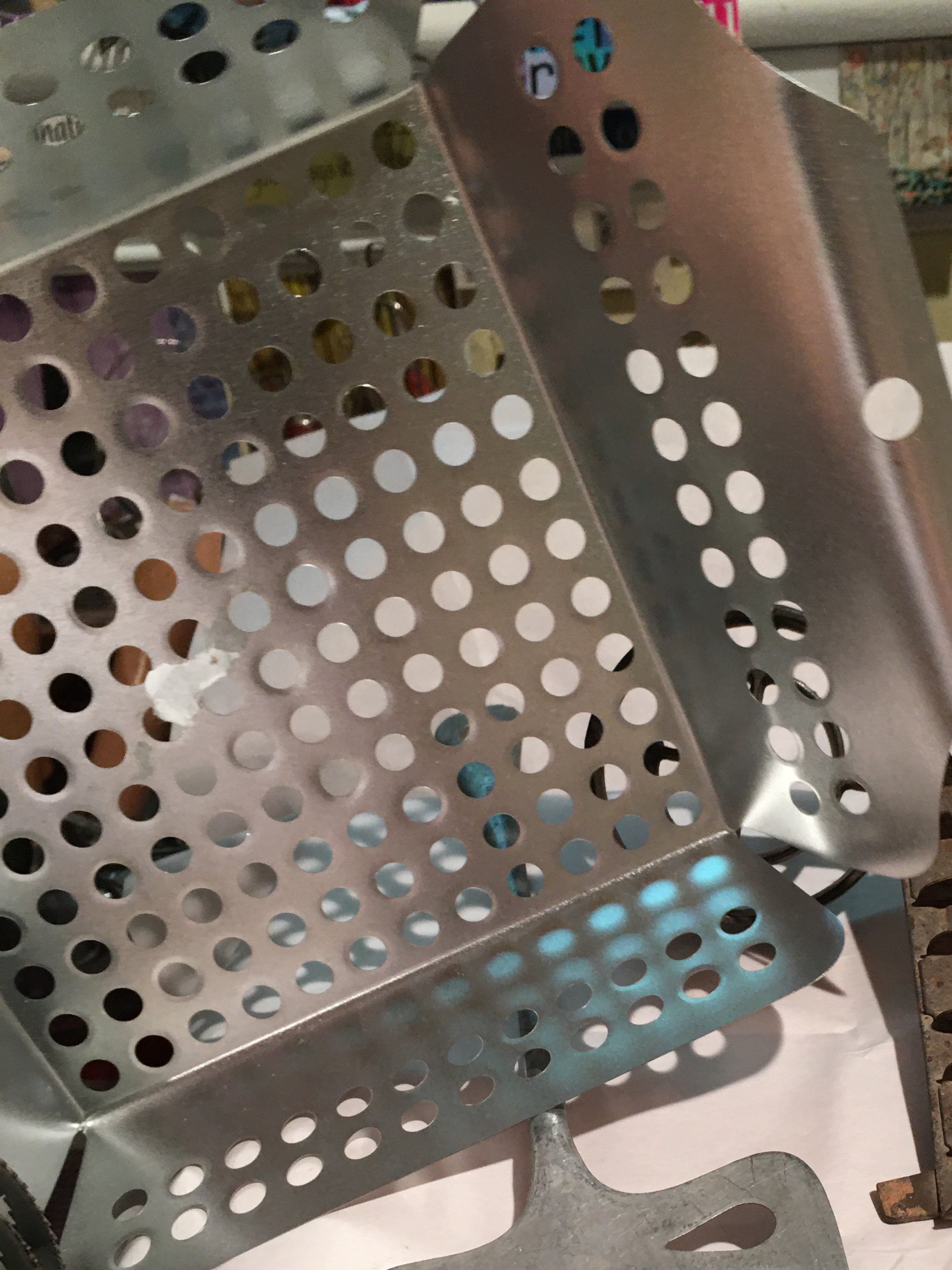
A strainer of some sort. Great for adding circular patterns to the wax. It can be done two ways. Impress the entire piece into warm wax or use as a stencil and run a brush of wax over to build up a pattern on the surface.